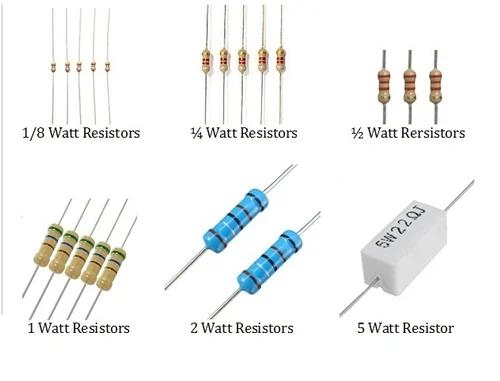What are the 4 types of resistors?
Resistors are an essential component of any electronic circuit. They are used to regulate the flow of current and voltage within the circuit, preventing damage to components and ensuring the proper functioning of the device. There are many different types of resistors available, each with its unique properties and applications. In this article, we will discuss the four most common types of resistors and their features.

Carbon Composition Resistors
Carbon composition resistors are one of the oldest and most widely used types of resistors. They are made by mixing carbon particles with a binder and then compressing the mixture into a cylindrical shape. The resistance value is determined by the length and diameter of the cylinder.
Carbon composition resistors are generally low-cost and reliable. However, they have a high temperature coefficient, which means their resistance changes with temperature. They are also sensitive to mechanical shock and can generate a lot of noise.
Film Resistors
Film resistors are made by depositing a thin film of resistive material onto a ceramic substrate. The resistive material is usually made of metal or metal oxide, such as nickel-chrome or tantalum nitride. The resistance value is determined by the thickness, length, and width of the film.
Film resistors are more stable than carbon composition resistors and have a lower temperature coefficient. They are also more resistant to mechanical shock and generate less noise. However, they are more expensive than carbon composition resistors and are not suitable for high power applications.
Wire-wound Resistors
Wire-wound resistors are made by winding a resistive wire around a ceramic or fiberglass core. The resistance value is determined by the length, diameter, and number of turns of the wire.
Wire-wound resistors are very stable and have a low temperature coefficient. They are also suitable for high power applications, as they can handle large amounts of current. However, they are more expensive than carbon composition and film resistors and can generate electromagnetic interference.
SMD Resistors
Surface mount device (SMD) resistors are miniature resistors that are mounted directly onto the surface of a circuit board. They are made using thin-film technology or by printing a resistive ink onto the board.
SMD resistors are small, lightweight, and can be placed close together, making them ideal for high-density circuit designs. They also have a low temperature coefficient and are more resistant to mechanical shock than carbon composition resistors. However, they are not suitable for high power applications and can be difficult to replace if they fail.
In conclusion, understanding the different types of resistors and their features is essential when designing an electronic circuit. Choosing the right resistor for the job can ensure the circuit operates correctly, is reliable, and can last for years. Whether it's a carbon composition, film, wire-wound, or SMD resistor, each type has its advantages and disadvantages, and it's up to the designer to select the right one for the job.

